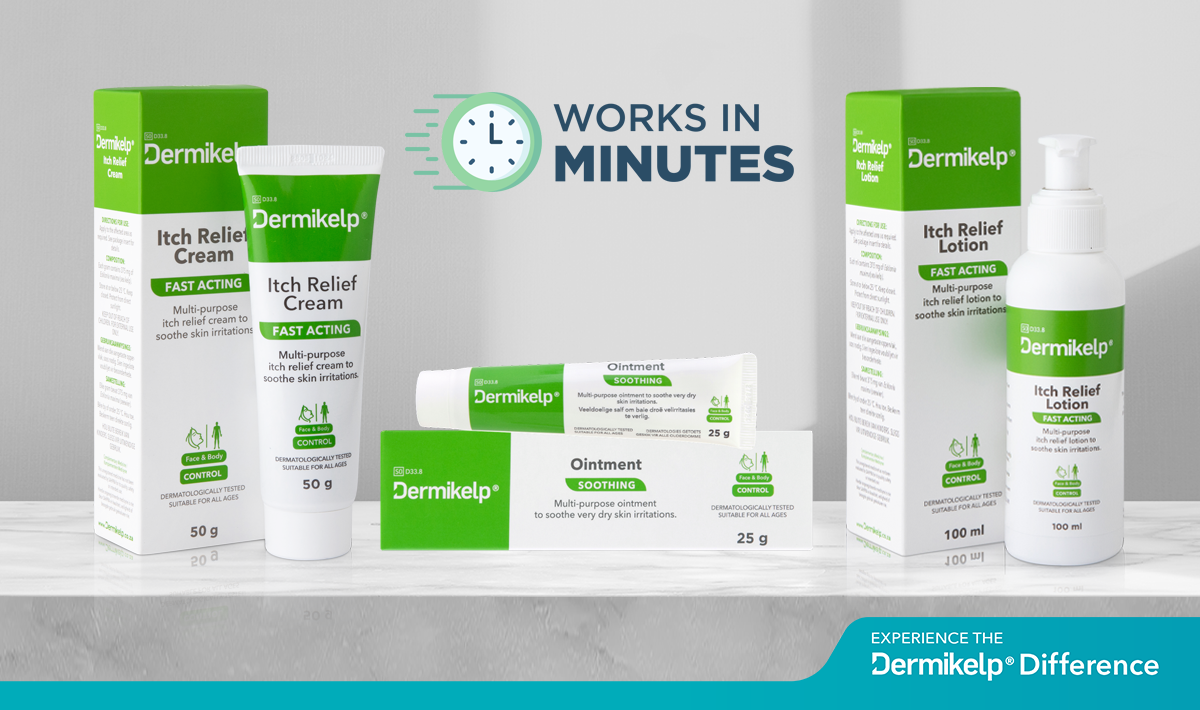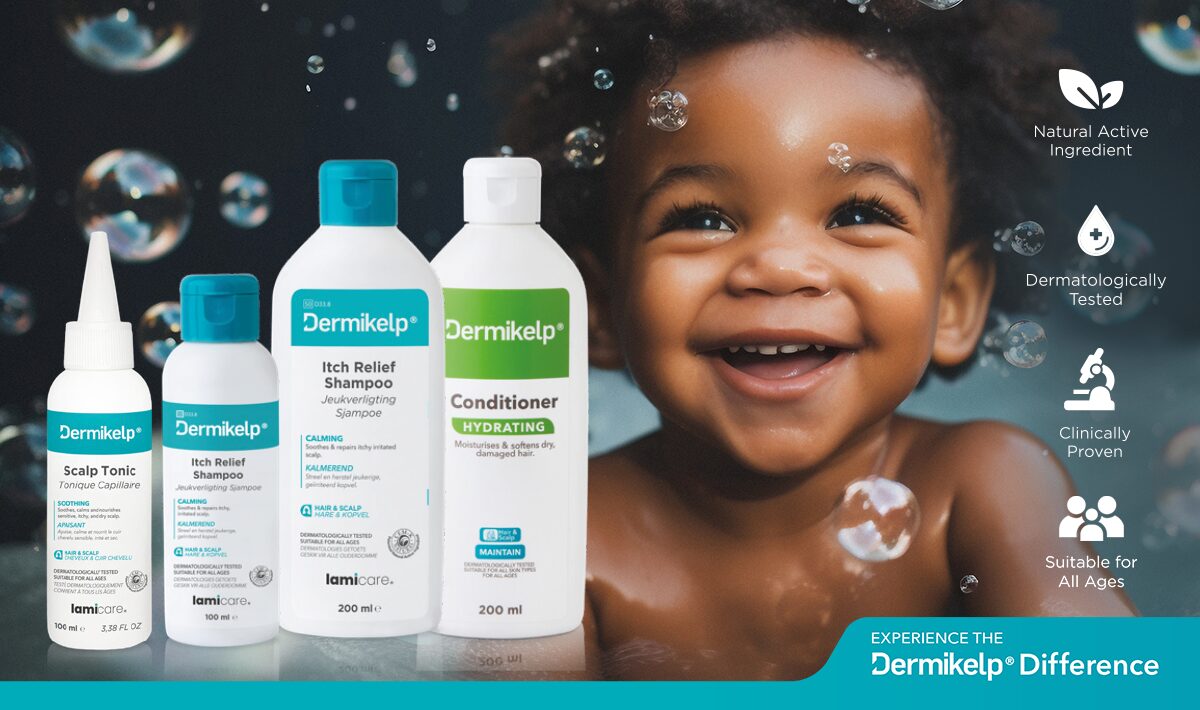Infant eczema and cradle cap
Infant eczema and cradle cap
Infant eczema, or baby eczema (atopic dermatitis), is a common itchy skin condition that affects up to 20% of babies worldwide.¹ Fortunately, effective, natural treatments are available. The Dermikelp® range offers a gentle, cortisone-free alternative to harsh steroid creams, helping parents manage eczema and other common infant skin conditions like cradle cap, heat rash, and dermatitis.
Overview
- Cradle Cap: Scaly, greasy patches on the scalp, eyebrows, and behind the ears.⁵
- Heat Rash: Tiny red bumps caused by blocked sweat ducts, common in warm climates.
- Infantile Seborrhoeic Dermatitis: A form of cradle cap that may affect other body areas.
- Dermatitis: General inflammation of the skin from irritants or allergens.⁶
Causes and Risk Factors
- Immature skin barrier in babies allows irritants and allergens to penetrate more easily.
- Genetics: If one or both parents have eczema or allergies, the child is more likely to develop it.³
- Environmental factors like dry weather, harsh soaps, or rough clothing can trigger symptoms.
Signs and Symptoms
- Itchy, red, or dry skin
- Rough or flaky patches (often on the face, arms, or legs)
- Irritability and disturbed sleep due to discomfort
- Cradle cap appears as thick, yellowish scales on the scalp but is not usually itchy⁵
- Heat rash appears as small red bumps in folds of skin, especially in hot weather

Diagnosis
Impact on Quality of Life

Prevention and Lifestyle Changes
- Dress baby in soft, breathable fabrics (preferably cotton)
- Keep fingernails short to prevent scratching
- Use mild, fragrance-free detergents and double-rinse clothes
- Avoid sudden temperature changes
- Moisturise baby’s skin daily with non-irritating products
- Avoid over-bathing; use lukewarm water and gentle cleansers
- Breastfeeding mothers should monitor potential food triggers if flare-ups occur
Treatment
- Dermikelp® Itch Relief Cream: Ideal for dry, inflamed patches on sensitive areas.
- Dermikelp® Itch Relief Ointment: Provides a thicker, longer-lasting barrier for very dry or stubborn skin.
- Dermikelp® Itch Relief Lotion: Lightweight formula suitable for large or hairy areas.
- Dermikelp® Soothing Shampoo: Helps relieve cradle cap and seborrhoeic dermatitis on the scalp. Note: Avoid eye contact.
Backed by dermatological testing and EU safety approval, these products contain the patented CEM-K active ingredient derived from Ecklonia maxima (Giant sea kelp). CEM-K has been clinically shown to rapidly reduce redness and inflammation (erythema and oedema), helping soothe the skin without the side effects associated with cortisone. Dermikelp® products are free from steroids, artificial fragrances, and irritants, making them safe for daily use on babies and young children.
Medical References
¹ Mayo Clinic. How to treat baby eczema. https://www.mayoclinic.org/diseases-conditions/atopic-dermatitis-eczema/expert-answers/baby-eczema/faq-20450999 ² WebMD. Does my baby have eczema? https://www.webmd.com/parenting/baby/baby-eczema-questions-answers ³ Loma Linda University Health. Pediatrician breaks down infant eczema. https://news.llu.edu/health-wellness/pediatrician-breaks-down-infant-eczema-and-how-best-combat-it ⁴ Johns Hopkins Medicine. Managing eczema in winter and year-round. https://www.hopkinsmedicine.org/health/wellness-and-prevention/managing-eczema-in-winter-and-year-round-a-parents-guide ⁵ Mayo Clinic. Cradle Cap Symptoms and Causes. https://www.mayoclinic.org/diseases-conditions/cradle-cap/symptoms-causes/syc-20350396 ⁶ National Eczema Association. https://nationaleczema.org/eczema/types-of-eczema







